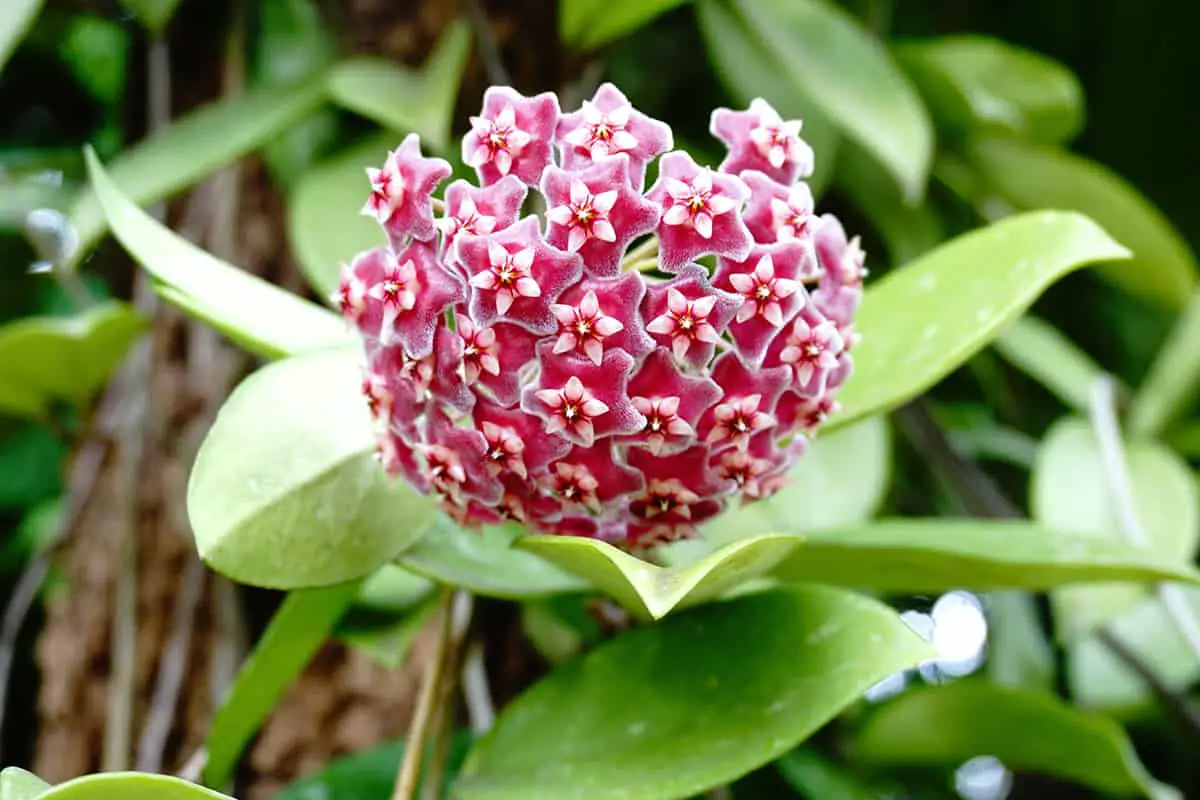After months of waiting, your Hoya plant finally sprouts a cluster of star-shaped blooms, a rewarding sight for any plant enthusiast. This moment is a testament to the importance of understanding and applying the right care techniques, from watering schedules to lighting conditions, ensuring your Hoya not only survives but thrives.
Let’s dive into the specifics of nurturing these stunning plants to encourage vibrant growth and flowering.
| Common Name | Wax Plant |
| Botanical Name | Hoya carnosa |
| Family | Apocynaceae |
| History & Origin | Native to East Asia and Australia |
| Plant Type | Evergreen perennial vine |
| Mature Size | Up to 10 feet in length (indoor) |
| Sun Exposure | Bright, indirect light preferred |
| Soil Type | Well-draining, airy potting mix |
| Soil pH | Slightly acidic to neutral |
| Temperature | Prefers 60-85°F (15-29°C), no cold drafts |
| Watering | Water deeply but infrequently, let the soil dry |
| Fertilizing | Feed bi-weekly during the growing season with diluted fertilizer |
| Bloom Time | Typically in summer, but can vary |
| Flower Color | Usually pink, white, or red |
| Hardiness Zone | Generally grown indoors; zone 11 if outdoors |
| Toxicity | Non-toxic to pets and humans |
| Common Problems | Root rot from overwatering, mealybugs, aphids |
Table of Contents
Propagation

Growing a Hoya plant from cuttings is straightforward. Begin by selecting a healthy stem. Look for one with multiple leaves. Using clean, sharp scissors, cut a 4-6 inch piece just below a node, where leaves attach.
Place your stem cutting in water or a moist potting mix. Roots emerge best at warm temperatures. Choose a spot indoors with bright, indirect sunlight. Keep the soil lightly moist but not wet to encourage rooting.
As roots develop, usually in a few weeks, prepare to transfer the cutting. A small pot with a well-draining soil mix is ideal for your new Hoya plant. Gently plant the rooted cutting and water it well.
Light

Hoya plants thrive under bright, indirect light. For optimal growth, place your Hoya where it can receive plenty of light without direct sun exposure. East-facing windows often provide ideal conditions for Hoyas, allowing them to bask in soft morning sunlight. In contrast, harsh afternoon light from south or west-facing windows might be too intense and could burn the leaves.
If natural light is low, consider supplemental artificial lighting. A simple fluorescent lamp can supply the necessary light intensity Hoyas need. Aim for a light level between 50 and 250 foot-candles. This ensures the Hoya can photosynthesize effectively to support its growth and bloom.
Avoid placing your Hoya in dim areas. Insufficient light can lead to weak growth, fewer flowers, and an overall lack of vitality. Regularly observe your plant and notice changes in growth or leaf color, as these can signal if the light level is adequate or if adjustments are needed. Adjusting the placement of your Hoya or the light intensity can make a significant difference in its health.
Soil

You should choose a well-draining mix. A blend made for cacti works well, providing the airy structure Hoyas need. It’s essential to prevent water from pooling around the roots.
Consider adding perlite or pumice to increase drainage. These materials assist in avoiding overwatering, which can lead to root rot. Secure a growing environment where moisture exists without lingering.
You must keep the soil lightly moist. Between watering, allow the top inch to dry. This practice mimics the Hoya’s natural habitat and promotes healthy growth. Always check the moisture level before watering again.
Adapt your soil mix to your home’s humidity. In drier conditions, retain some moisture using peat or coir. These components help retain water and provide structure. They enrich the mix while still offering good drainage.
Water

Hoyas demand a well-balanced moisture level. They need water but dislike soggy conditions. Check the top inch of soil; if it feels dry, it’s time to water. During active growth in spring and summer, your Hoya will drink more. In the fall and winter, water less, allowing the soil to dry out more between waterings.
Excess water is a common mistake. Overwatering can lead to root rot, a fatal condition for your plant. To avoid this, ensure your pot has drainage holes and use pots that drain well. When you water, do so thoroughly until it runs from the bottom, then allow excess water to drain away.
Your Hoya will thrive with a balance. Monitor the moisture and make adjustments as needed for healthy growth. Remember, wax plants love high humidity; a little extra humidity can keep them happy without the soil being too wet.
Temperature And Humidity

Growing a Hoya plant successfully requires attention to temperature and humidity levels. These plants thrive in warm conditions. You should maintain daytime temperatures between 70° and 80°F. At night, aim for cooler temperatures, ideally from 60° to 68°F. This mimics the Hoya’s natural environment, promoting growth and blooming.
Humidity is also crucial for Hoya plants. Dry air can attract spider mites, a common pest for Hoyas. To prevent this, keep the air around your Hoya humid. Misting the plant often provides the necessary moisture. However, ensure you use room temperature water to avoid shocking the plant.
Fertilizer

Your Hoya plant benefits from regular fertilization. During the growing season, which spans spring to fall, provide a balanced, water-soluble fertilizer. Aim for a mixture high in nitrogen, phosphorus, and potassium. These macronutrients support overall health and blooming.
Frequency Matters: Fertilize your Hoya once every two to three weeks. In winter, reduce this to once a month or pause altogether. The plant’s growth slows in cooler months and needs less nutrition.
Consider the concentration. Hoya plants prefer a half-strength solution to prevent root burn. Full-strength formulas can overwhelm your plant, leading to potential damage.
Signs of Over-fertilization: Watch for brown leaf tips and a crust of fertilizer on the soil surface. These signs indicate you should cut back on the amount or frequency of fertilization.
Pruning
Pruning your hoya plant encourages healthy growth. When you trim back overgrown vines, your plant can produce more leaves. Focus on removing dead or yellowing stems, as these can deplete the plant’s resources. Cutting just above a leaf node directs plant energy to new growth.
Springtime is ideal for pruning hoya plants. During this season, the plant recovers quickly, and you can shape it without stress. If you notice your hoya has become too dense, don’t hesitate to thin it out.
While pruning, use sharp, clean shears. This prevents damage to the plant and avoids introducing diseases. Regularly cleaning your pruning tools also keeps your hoya healthy.
When buds appear, avoid moving your hoya. Stable conditions support the flowering process, and changing its location can cause bud drop. If you need to prune near flowering clusters, proceed with caution to avoid any potential damage to these delicate structures.
Potting And Repotting
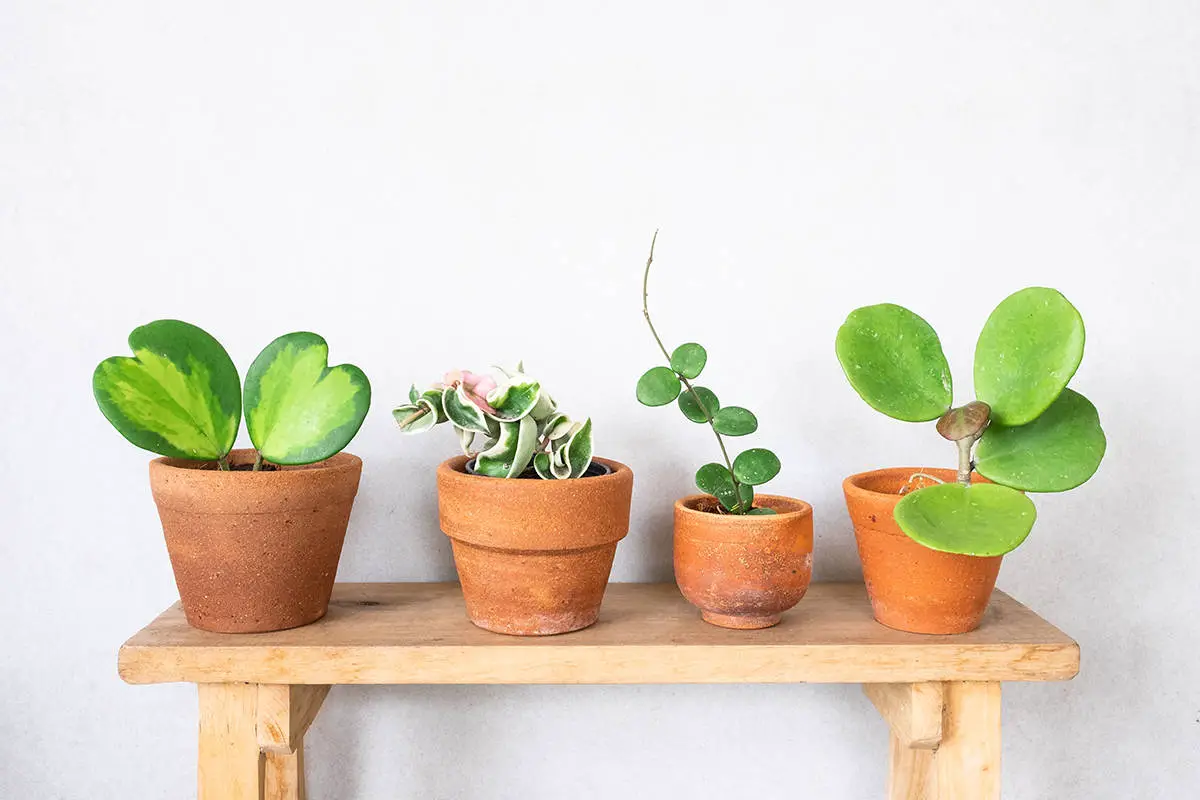
Growing a Hoya plant begins with proper potting. Choose a well-draining pot with at least one drainage hole. Your Hoya plant prefers a snug fit, so select a pot that comfortably houses the root ball plus some room for growth, typically no more than 1-2 inches larger in diameter than the current pot.
Use a high-quality potting mix with good aeration. A mix of peat, perlite, and pine bark offers your Hoya good drainage and root support. Check if your Hoya plant needs repotting every year, but typical repotting frequency is every two to three years.
Repot your Hoya plant in the spring, just as the plant prepares to grow actively. When repotting, gently remove the plant from its current pot. Examine the roots and trim any that are dead or excessively long. Place fresh potting mix in the new pot and position the root ball at the right height before filling in around it with more mix.
Water the newly potted Hoya sparingly to settle the roots and resume your regular watering schedule once the plant shows signs of growth. Following these steps ensures your Hoya plant thrives and continues to beautify your space.
Common Problems & Troubleshooting
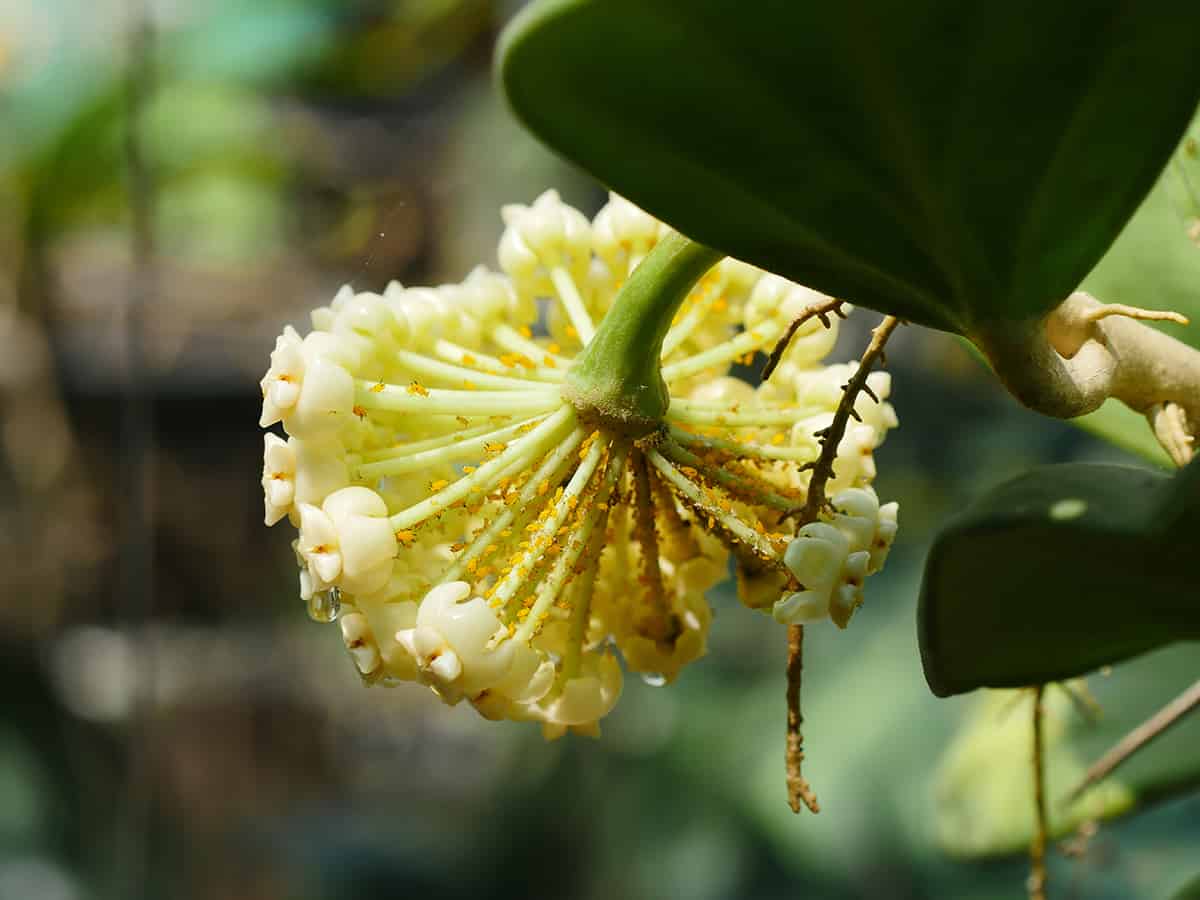
When you grow a Hoya plant, you may encounter issues such as pests and diseases. The most common pests include mealybugs and spider mites. Mealybugs appear as white, cottony masses on the leaves and stems. Meanwhile, spider mites can cause yellowing or bronzing of the leaves and leave fine webs. To combat these pests, you can use insecticidal soap or neem oil.
Overwatering is a widespread issue, leading to root rot. Ensure your Hoya has well-draining soil and only water when the top inch of soil is dry.
Your Hoya plant might also face fungal problems like root rot due to excessive water. Consider using pots with drainage holes to prevent water from pooling. If your Hoya’s leaves turn yellow, it might indicate overwatering or a nutrient deficiency. Use a balanced, water-soluble fertilizer every few weeks during the growing season to maintain nutrient levels.
Underwatering can make the leaves wilt and dry, so it’s essential to maintain consistent watering practices.
You might notice that the lovely blooms of your Hoya don’t appear if the light conditions are not suitable. Hoyas need bright, indirect light to thrive and bloom. If your plant doesn’t get enough light, consider moving it to a brighter spot. Remember that Hoyas enjoy a bit of stress, so don’t rush to repot or over-fertilize them. This can actually keep them from blooming. Keep your Hoya happy, and you’ll enjoy their fragrant flowers and attractive leaves.
Hoya Plant Varieties
In the world of houseplants, Hoya plants stand out for their diverse selection of leaf shapes, patterns, and flowering characteristics. Here, you’ll discover popular Hoya varieties that are well-suited to indoor cultivation.
Hoya Carnosa
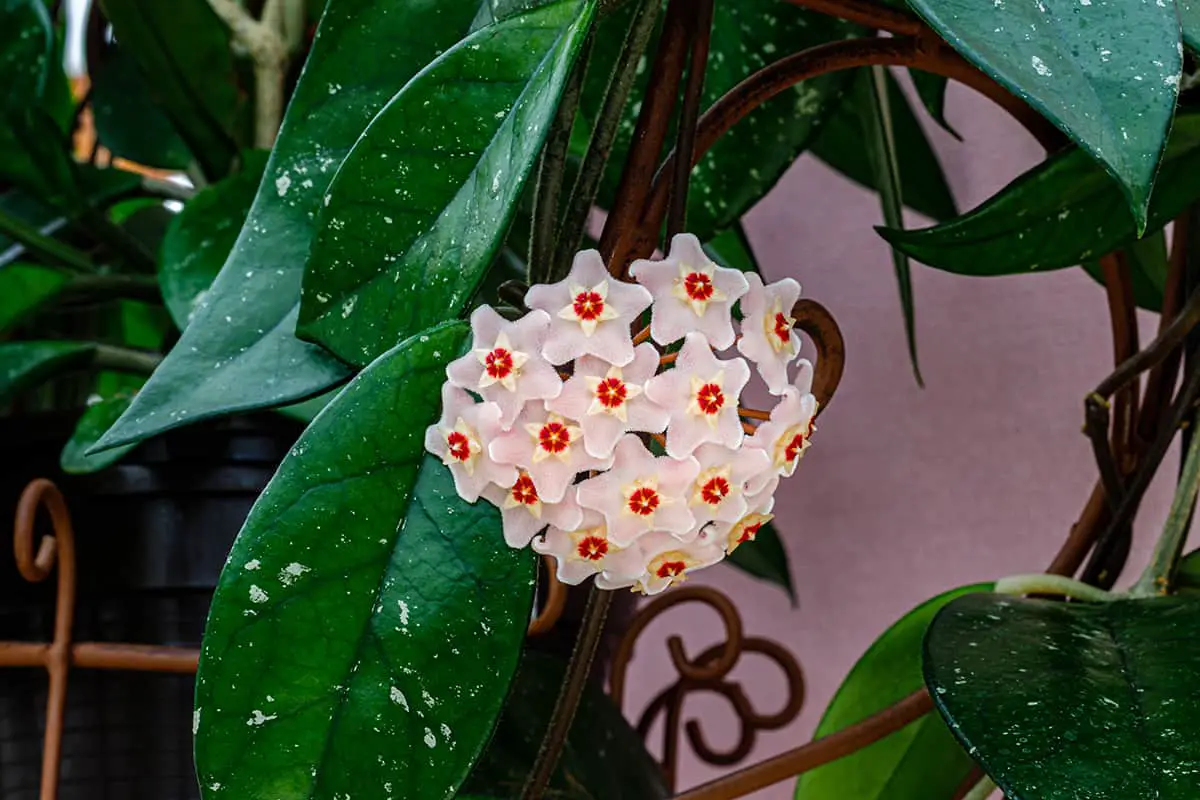
Hoya carnosa is a common variety you may know as the wax plant. Its leaves can appear twisted or curl into a rope-like shape, earning them the nickname rope plant. These plants are appreciated for their waxy foliage and fragrant star-shaped flowers.
Hoya Kerrii
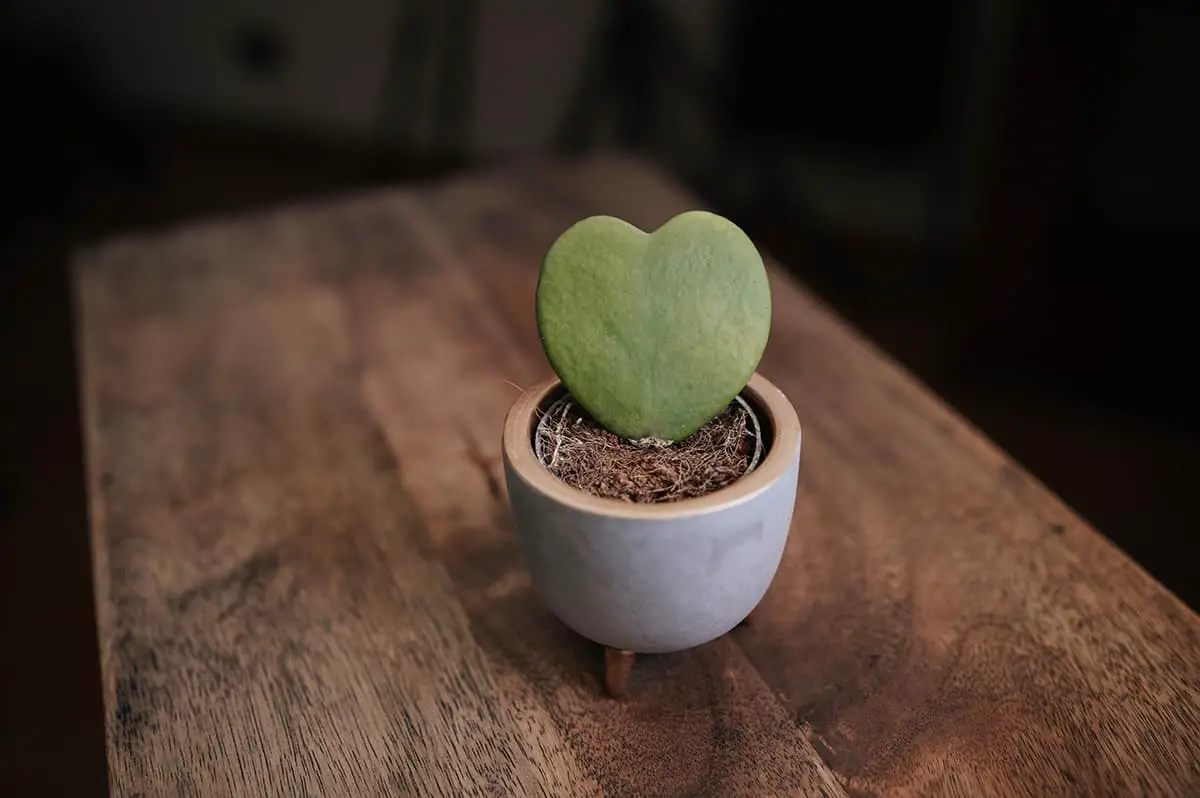
The Hoya kerrii, often called the Sweetheart Hoya or Valentine Hoya, is notable for its succulent, heart-shaped leaves. It thrives as an epiphyte, meaning it naturally grows on other plants for support.
Hoya Compacta

The unique feature of Hoya compacta is its draping vines with leaves that form a compact, crinkled pattern. These plants are another variant of Hoya carnosa and are quite striking due to their unusual foliage.
Hoya Bella
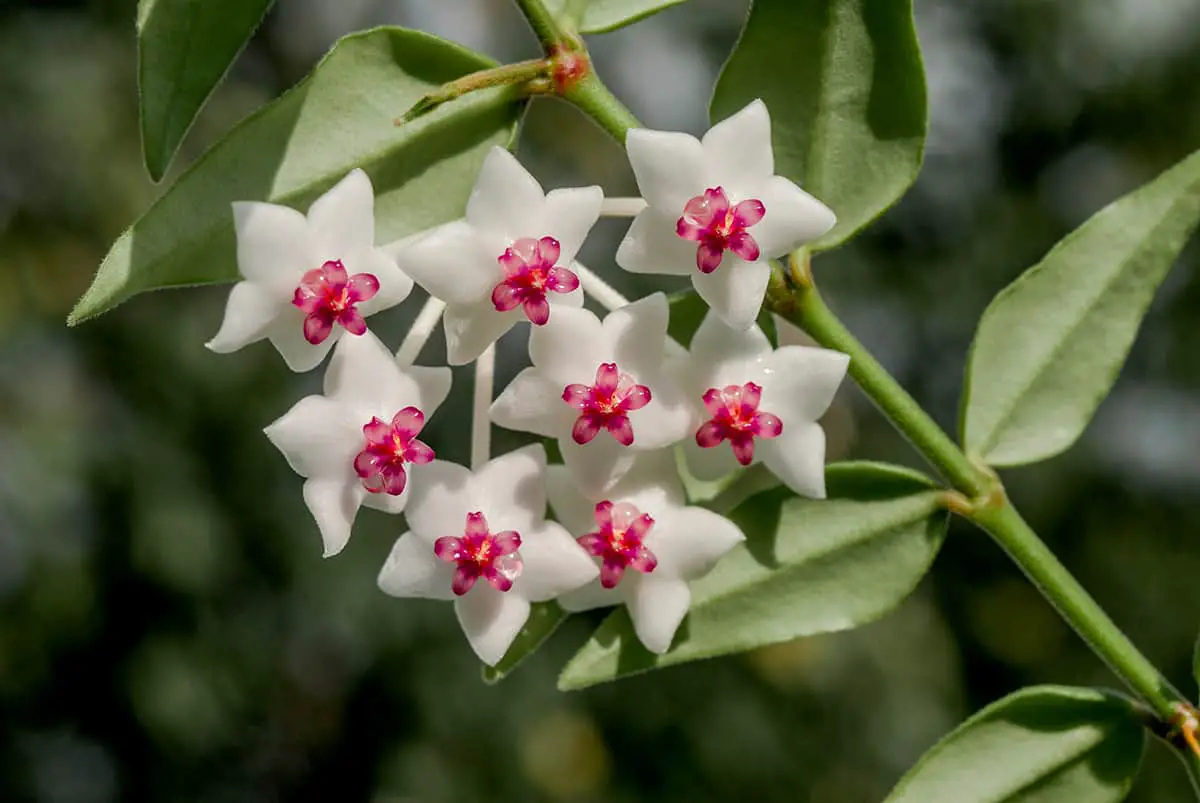
Hoya bella, or Miniature Wax Plant, is perfect for small spaces. Its small, lanceolate leaves and trailing vines complement delicate white flowers that bring a subtle, sweet scent to your room.
Hoya Obovata
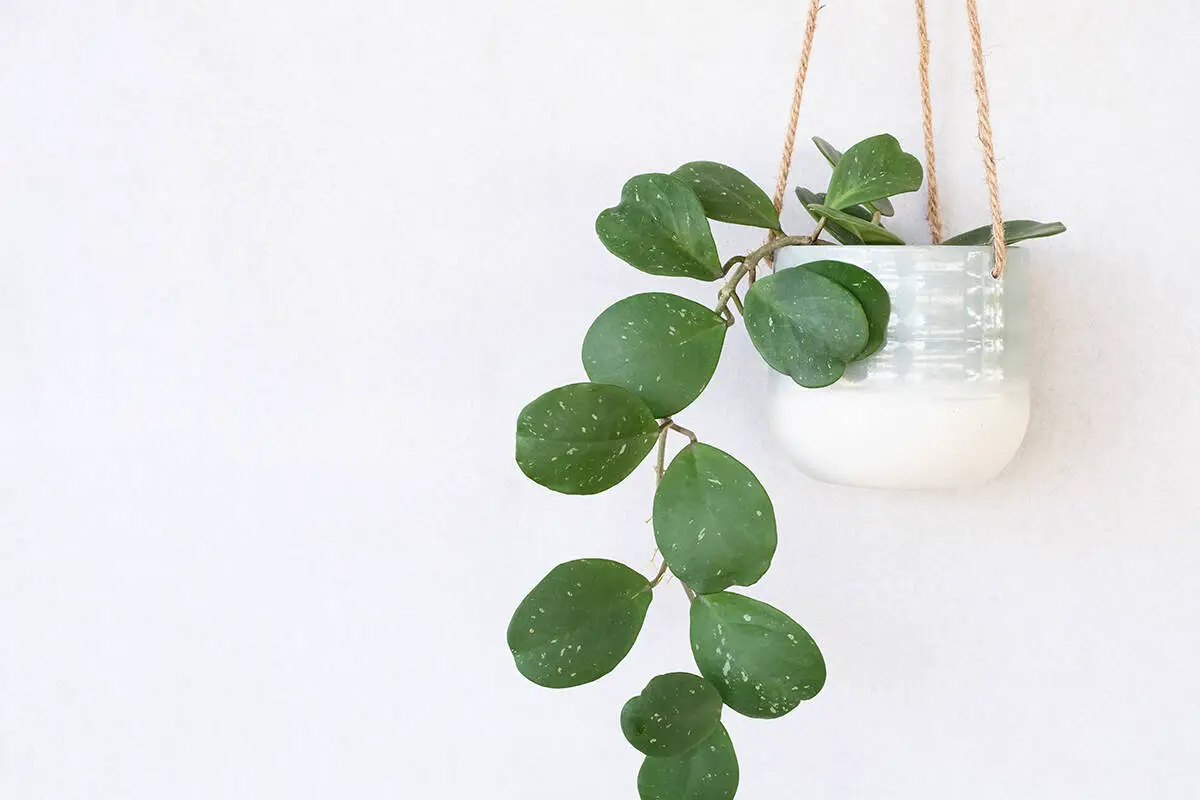
Hoya obovata boasts broad, round, or oval green leaves often speckled with splashes of white or pale pink. Large clusters of flowers display its classic Hoya beauty.
Hoya Pubicalyx
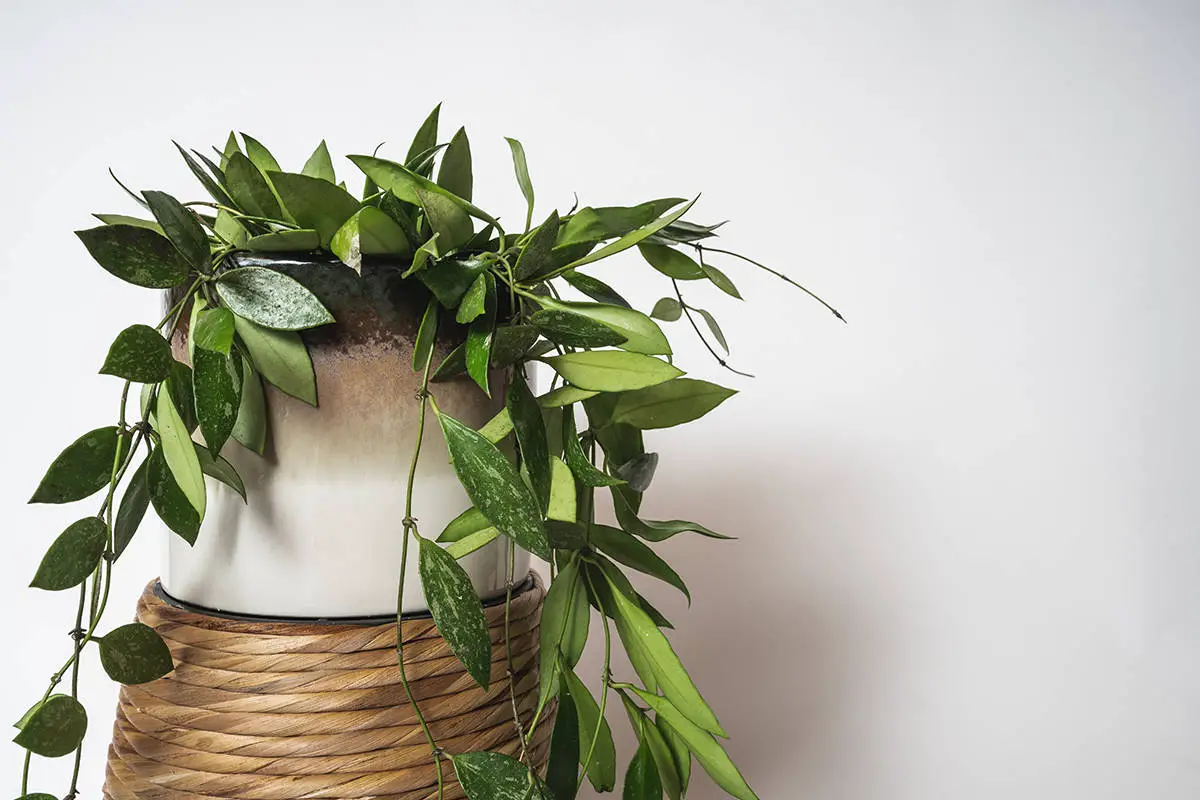
This variety has a robust climbing habit. Hoya pubicalyx’s pointed green leaves sometimes feature silver splashes. It rewards your care with fragrant purplish flowers.
Hoya Linearis
Recognized for its narrow, needle-like leaves, Hoya linearis presents a cascade of greenery. Its softer foliage sets it apart from other Hoyas, and it appreciates cooler temperatures.
Hoya Australis
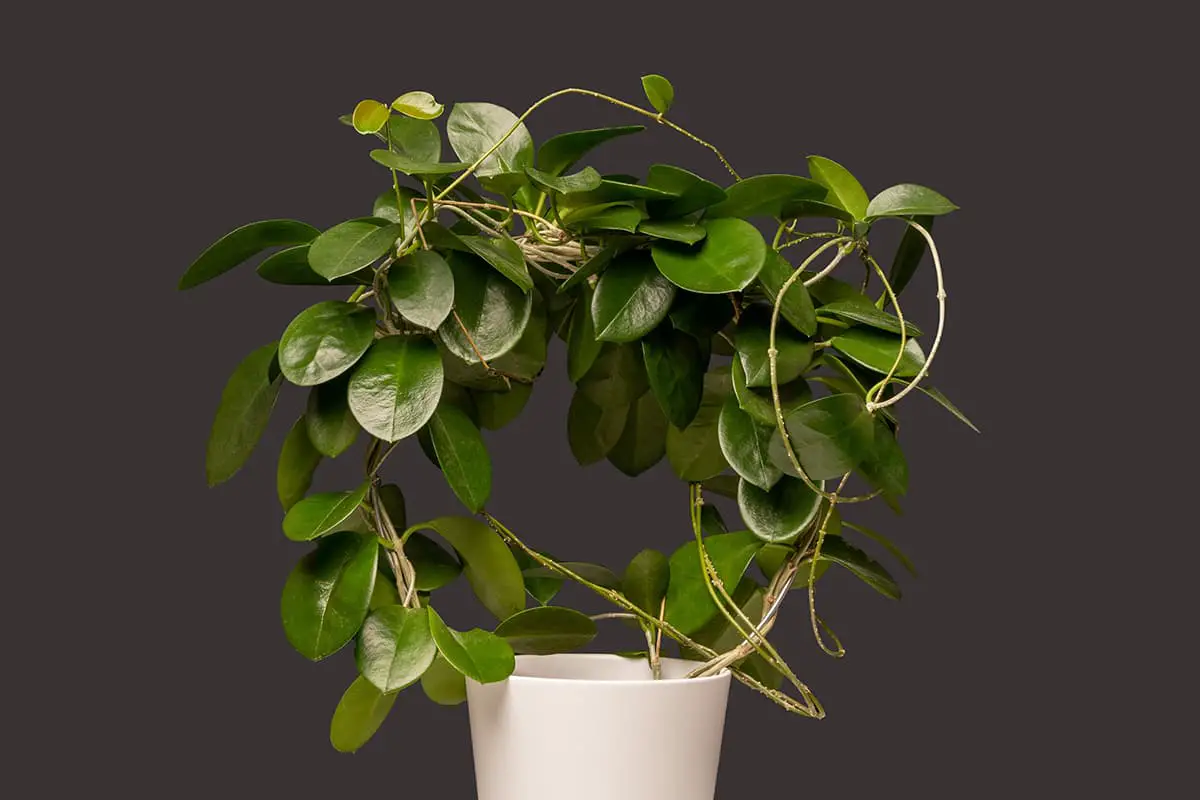
As the name suggests, Hoya australis originates from Australia. It’s a fast grower with glossy green leaves and is one of the easiest Hoyas to care for.
Hoya Lacunosa
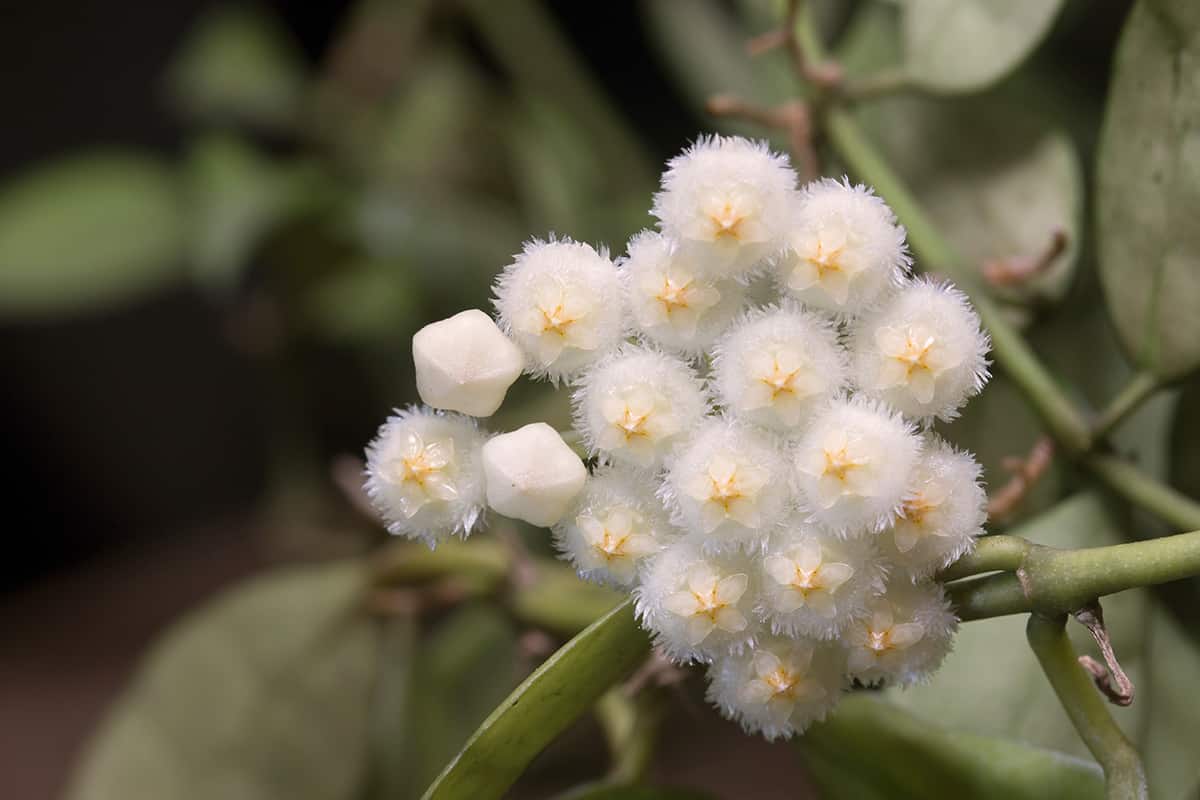
Hoya lacunosa is compact and bushy, perfect for small pots. Its small, waxy leaves and clusters of sweet-smelling flowers make it a lovely addition to your collection.
Hoya Multiflora

Also known as Shooting Star Hoya, the Hoya multiflora is distinct with its yellow, star-shaped flowers. Its growth pattern and bloom structure are quite different from other Hoya varieties, offering a lively spectacle.
once a week or less, depending on the plant’s environment. Always check the soil, as watering needs can change with seasons.
